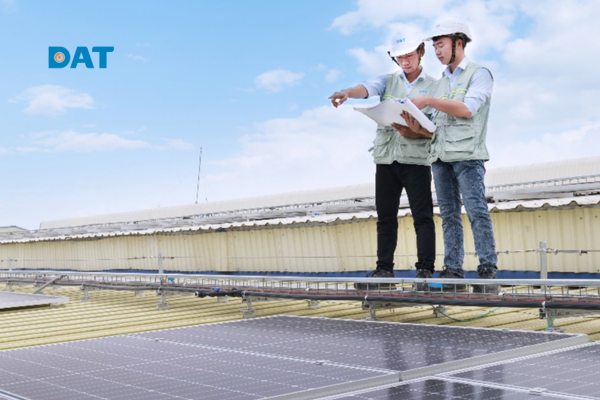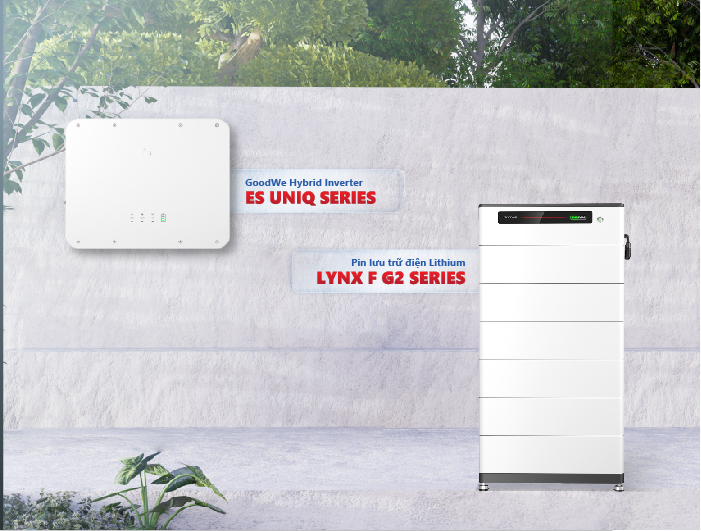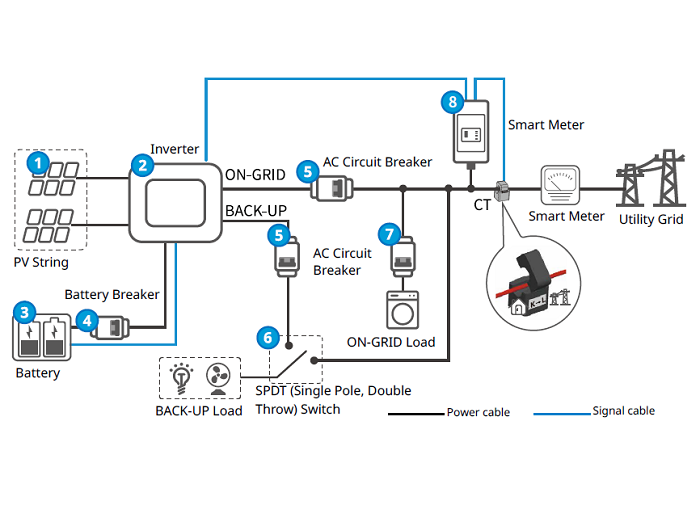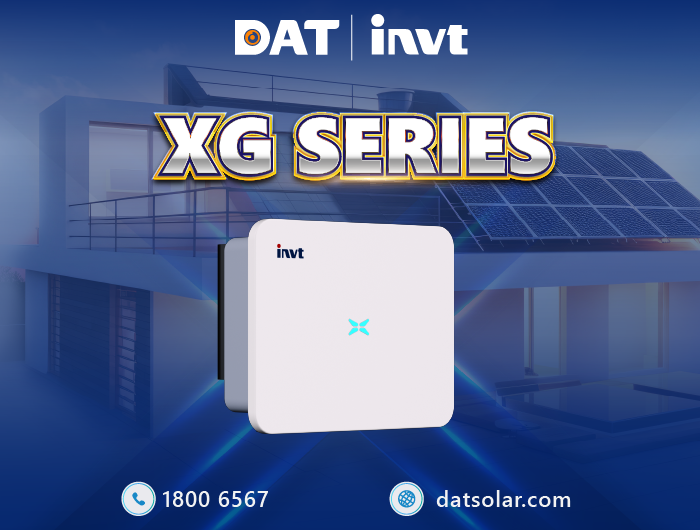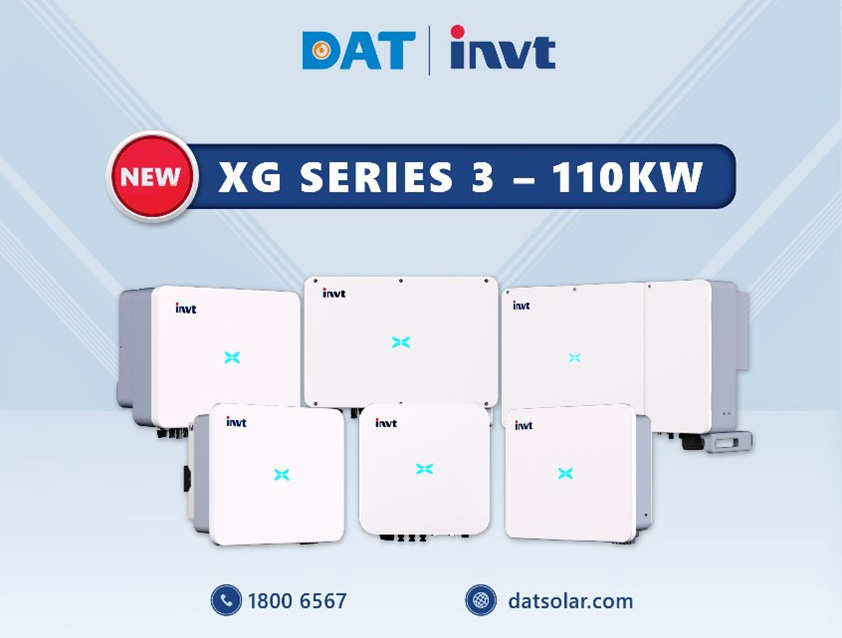Types of Solar Panels: Which One to Choose?
1. Main types of solar panels
2. What materials are solar panels made of?
3. Physical appearance of different types of solar panels
4. Efficiency of each type of solar panel
5. Price differences among various types of solar panels
6. Other types of solar panels
7. Best type of solar panel for installation
8. Top 10 best solar panels in 2021
Currently, the majority of available solar panels fall into one of three categories: mono (monocrystalline), poly (polycrystalline), and thin-film. These solar panels differ in how they are manufactured, their shapes, efficiency, costs, and installation methods.
Depending on your needs, you may consider choosing the most suitable type.
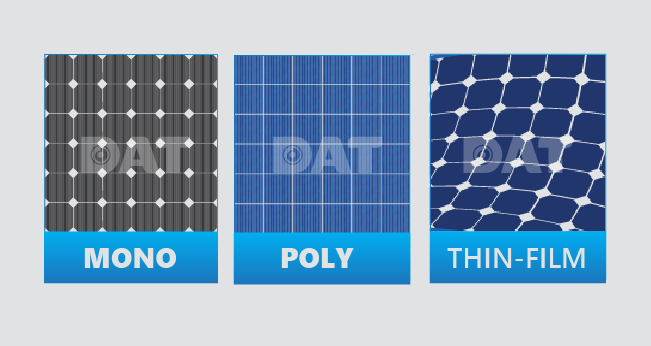
Main Types of Solar Panels
There are three main types of solar panels: mono, poly, and thin-film. Each type has its own advantages and disadvantages, and the most suitable solar panel for your installation will depend on specific factors such as your budget and the characteristics of the desired system.
| Type | Pros | Cons |
| Mono (Monocrystalline) | Highest efficiency | Higher cost |
| Poly (Polycrystalline) | High efficiency. Affordable cost |
Lower efficiency compared to mono |
| Thin-film | Lightweight, flexible | Lowest efficiency |
Below, DAT Solar will address some common questions and concerns about various types of solar panels.
What Materials Are Solar Panels Made Of?
To generate electricity, solar panels are constructed using semiconductor materials that convert light into electrical energy. The most common material used as a semiconductor in the production of solar panels is silicon.
Mono and Poly Panels
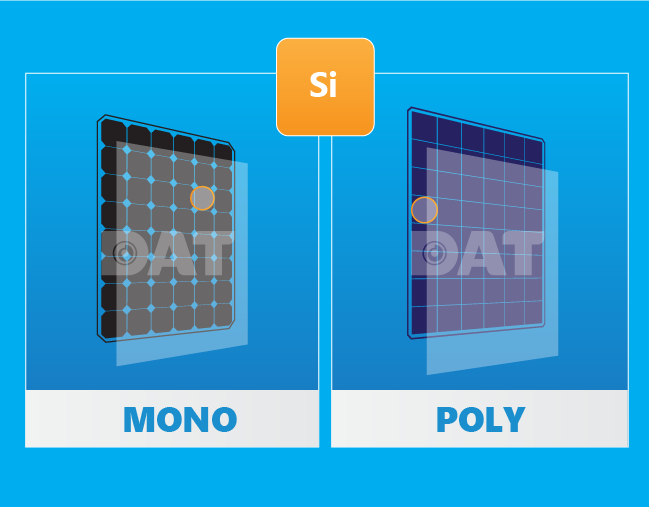
Both mono and poly solar panels have solar cells made from silicon wafers. To create a mono or poly solar panel, thin silicon wafers (approximately 0.76 mm thin) are arranged in rows and columns to form a rectangular shape, then covered with a glass panel and framed together.
While both types of solar panels have cells made from silicon, mono and poly panels differ in the composition of the silicon itself. Mono solar panels are cut from a single, pure crystal of silicon, while poly solar panels consist of multiple pieces of silicon crystals melted together before being cut into wafer form.
Thin-Film Panels
Unlike mono and poly solar panels, thin-film panels are made from various materials. The most common type of thin-film solar panel is made from cadmium telluride (CdTe). To produce this type of thin-film panel, manufacturers place a layer of CdTe between transparent conductive layers to capture sunlight. This thin-film technology also includes a top layer of glass for protection.
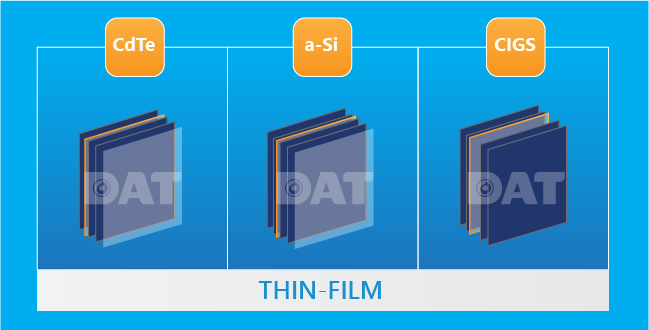
Solar panels can also be manufactured from amorphous silicon (a-Si), similar to the composition of mono and poly panels. While this type of thin-film solar panel contains silicon in its composition, it is not formed from rigid silicon wafers. Instead, it consists of non-crystalline silicon placed on glass, plastic, or metal.
Finally, there is Copper Indium Gallium Selenide (CIGS), another popular thin-film technology. CIGS solar panels have all four components placed between two conductive layers (such as glass, plastic, aluminum, or steel), with electrodes positioned on the front and back to collect electric current.
Appearance of Different Types of Solar Panels
The variation in materials and manufacturing processes results in differences in the appearance of various types of solar panels:
Mono Solar Panels
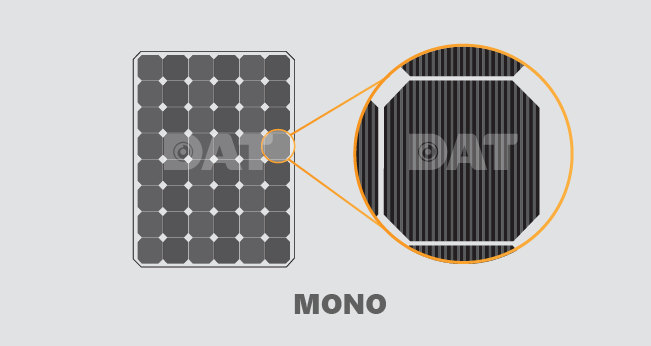
If you observe solar panels with black-colored cells, they are likely mono panels. The black appearance of these cells is due to light interacting with the pure crystalline silicon.
These panels often feature square-shaped cells arranged in continuous rows, creating white gaps between them. Some manufacturers, like Canadian Solar, may have slightly different surface characteristics for mono panels, but the distinct black color remains the most easily recognizable feature.
Poly Solar Panels
In contrast to mono solar panels, poly solar panels tend to have a slightly spotted greenish color due to light reflecting off the pieces of silicon within the cells in a different way than the reflection from a single crystalline silicon wafer.
New technologies, such as Black Silicon, add an additional layer of nanostructured material to the surface of poly solar panels, reducing the reflection of light back down to a minimum. Panels using this technology may appear blacker than normal, but the green spots are still noticeable.
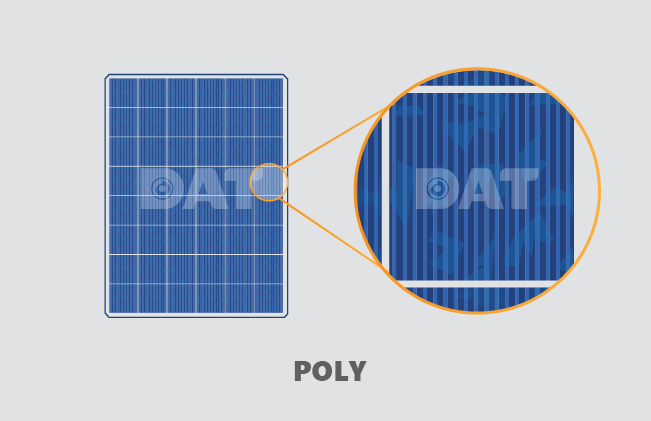
Thin-Film Solar Panels

Aesthetic considerations are the most significant difference when it comes to thin-film solar panels. As the name suggests, thin-film panels are generally thinner than other types of panels. This is because the cells in thin-film panels are about 350 times thinner than the crystalline wafers used in mono and poly panels.
In terms of color, thin-film solar panels can be either green or black, depending on the materials used in their construction. Nowadays, thin-film panels can even be integrated into building materials to create solar roof tiles.
Performance of Each Type of Solar Panel
The amount of electrical energy that different types of solar panels can generate varies
![]() Mono and Poly Solar Panels
Mono and Poly Solar Panels
Mono panels typically have the highest conversion efficiency and power output among the three types of panels. Most mono solar panels achieve conversion efficiencies of under 20%, while poly solar panels generally have conversion efficiencies ranging from 15% to 19%.
Mono panels tend to produce more energy than poly and thin-film panels because of their higher conversion efficiency. Many mono solar panels have capacities greater than 300W, with some reaching up to 450W. On the other hand, poly solar panels usually have lower power outputs.
This does not mean that mono and poly panels are of the same size. In fact, both types of panels have shifted towards designs with 60 cells in the past, but as technology advanced, the use of half-cut cells and splitting panels into two became more common, increasing the number of cells to around 120 to 144. Nevertheless, even with the same number of cells, mono panels always have the potential to produce more electricity.
![]() Thin-Film Solar Panels
Thin-Film Solar Panels
Thin-film solar panels generally have lower efficiency and power output compared to mono and poly panels. The efficiency will vary depending on the specific materials used to manufacture the cells, but they typically have conversion efficiencies close to or below 11%.
Unlike mono and poly solar panels with standardized cell quantities, thin-film technology lacks uniform sizing. Therefore, the power output of thin-film solar panels depends largely on their physical size. In general, the power per square meter of mono or poly solar panels is higher than that of thin-film panels.
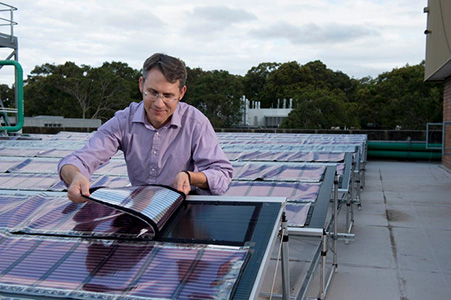
Price Differences Among Solar Panel Types
The production process and different materials used result in varying costs for each type of solar panel.
![]() Mono Solar Panels
Mono Solar Panels
Among all types of solar panels, mono panels are likely to be the most expensive. This is mainly due to the production process – as the panels are made from a single crystalline silicon, manufacturers incur the cost of creating these crystals. This process is known as the Czochralski process. This involves high energy consumption and leaves excess silicon pieces (which can then be used to produce poly panels).
![]() Poly Solar Panels
Poly Solar Panels
Poly solar panels are generally less expensive than mono panels. This is because the cells are made from pieces of silicon rather than a single pure crystalline silicon. This allows for a much simpler cell production process, resulting in lower costs for manufacturers and, ultimately, end users.
![]() Thin-Film Solar Panels
Thin-Film Solar Panels
The cost of thin-film solar panels largely depends on the type of material used. CdTe is generally the cheapest material to produce, while CIGS is significantly more expensive to manufacture compared to both CdTe and amorphous silicon (a-Si).
There may be differences in costs among various types of thin-film solar panels, but overall, the cost for this type of panel may be lower compared to mono and poly panels. Installing thin-film solar panels is less labor-intensive because they are lighter and more flexible, making it easier for installers to carry the panels onto roofs and ensure their safety. This reduces installation costs, making solar installation less expensive.
In summary, while it may seem that installing thin-film panels would be the most economically advantageous, in practice, mono and poly panels are still more widely used. This is because, for the same installation area, both mono and poly panels can generate much more electricity than thin-film panels.
Other Types of Solar Panels
The following are types of solar panels that are currently in the research and development stage and have not been widely applied in practice.
Biohybrid Solar Panels
The idea behind biohybrid solar panels is to use a new type of technology that combines organic material, photosystem 1 (mimicking the natural photosynthesis process), and inorganic material. Photosystem 1 layers capture light and convert it into chemical energy, generating an electric current.
Biohybrid solar panels also contain inorganic components like other conventional solar panels, but they incorporate multiple layers of photosystem 1 organic material. This results in a more efficient conversion of electrical energy.
Concentrated PV Solar Panels
Compared to other types of solar panels, concentrated PV solar panels have a curved mirror surface, lenses, and sometimes a cooling system to focus the sunlight onto a small cell, increasing their efficiency. This multifunctional type of solar panel has a conversion efficiency of up to 41%, the highest among all types of solar panels to date. (It should be noted that this is considered a system as it has many components rather than a simple solar panel.)
Concentrated PV solar panels can only be effective if they capture sunlight at a perfect angle. To achieve such efficiency, a sun-tracking system and a solar tracker need to be used to maximize direct sunlight.
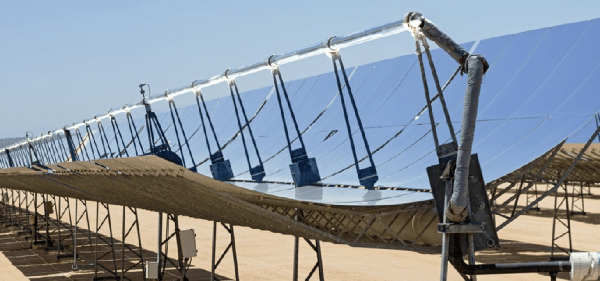
Which Type of Solar Panel is Best for Installation?
When selecting a type of solar panel for installation, decisions must be based on financial considerations, local conditions, and installation location. Each type – mono, poly, and thin-film – has its own advantages and disadvantages.
Property owners with ample space for solar panels may choose to install poly panels with average efficiency and lower costs. If space is limited, mono solar panels with higher efficiency may be the preferred choice.
Geographical location also influences the choice of solar panel type. In practice, mono solar panels outperform poly panels in conversion efficiency in areas with lower solar radiation (around 3.8 – 4.8 kWh/m2/day). Southern regions of Vietnam have the highest solar radiation intensity nationwide (from 4.8 – 5.6 kWh/m2/day), and northern regions have slightly lower solar radiation (from 3.8 – 4.7 kWh/m2/day). Additionally, the higher temperatures in the southern region need to be considered for the reduction in efficiency due to temperature. Moreover, the initial investment cost for a poly system is lower. Therefore, poly panels are suitable for use in the southern region, while mono panels are preferable in the northern region.
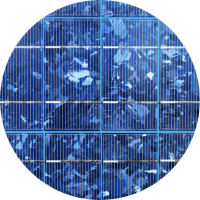
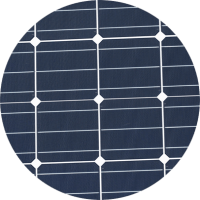
Thin-film solar panels are less commonly used in Vietnam because they require too much installation space and have lower conversion efficiency. They may be used in locations where traditional solar energy systems cannot bear the weight. Additionally, thin-film panels can sometimes be a useful solution for mobile solar systems, such as those on vehicles or boats.
Top 10 Best Solar Panels in 2021
1. LG: Comprehensive
2. SunPower: Highest Efficiency
3. Panasonic: Best Temperature Coefficient
4. Silfab: Best Warranty
5. Canadian Solar: Most Affordable
6. Trina Solar: Best Value
7. Q Cells: Consumer Favorite
8. Mission Solar: Best Small Manufacturer
9. Loom Solar: Most Reliable
10. Windy Nation: Best Backup Power Source
Note: The order does not reflect brand rankings but is a listing.
Conclusion
DAT Solar would like to conclude the article here. It is hoped that the article has answered the question “How many types of solar panels are there?” What is your opinion on this article? If you find it useful, feel free to share it with others.
Wishing you find the knowledge you need!

